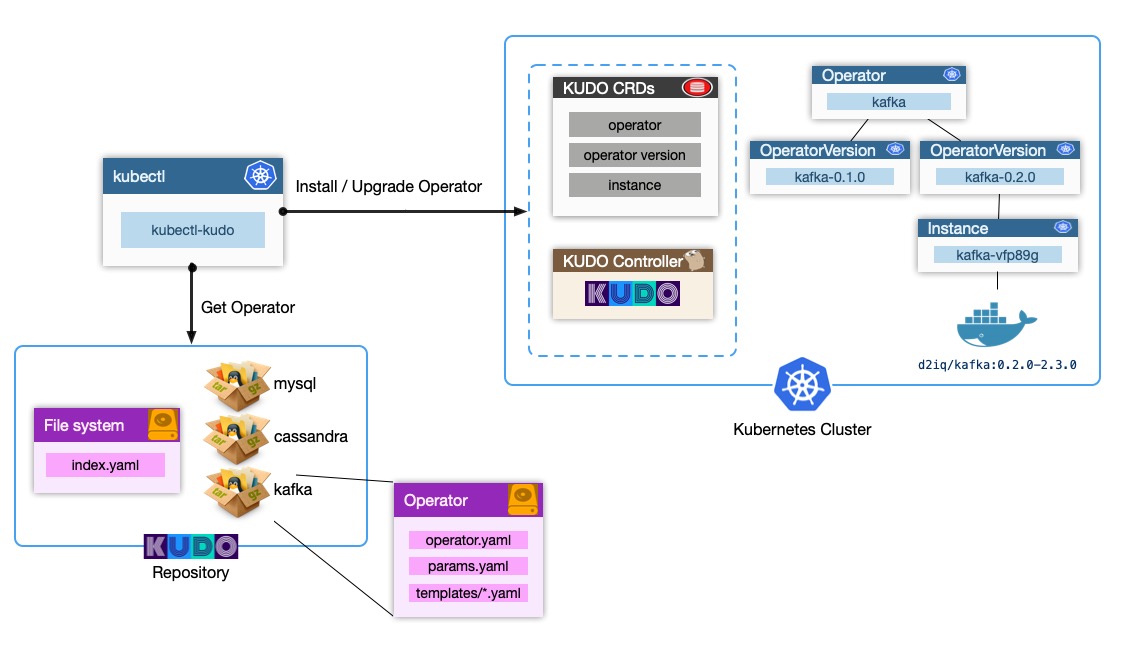# Architecture
# Architecture Diagram

# Components
kubectl-kudo is a kubectl plugin (opens new window) command-line client, which is invoked by kubectl kudo. The client is built to aid developers in creating KUDO operators and is used by ops teams to manage operators in a Kubernetes cluster. The client is capable of:
- Operator development
- End to end test harness execution
- Repository development and management
- Interacting with the deployed KUDO controller via KUDO CRDs
- Installing and uninstalling operator CRDs and operators
- Starting operator plans and querying their status
- Upgrading, updating, backing up and restoring operators
KUDO CRDs extend the Kubernetes API to support KUDO
KUDO Controller is a collection of controllers deployed into the cluster into the kudo-system namespace. The KUDO Controller provides the service defined by the related KUDO CRDs, and is managing KUDO operators. The KUDO controller is responsible for:
- Watching Kubernetes KUDO objects and ensuring desired state
- Creating KUDO operators and invoking operator plans
Read about KUDO's concepts for more details around operators, operator versions and instance CRDs.
KUDO Repository provides significant convenience but is not strictly required. It provides an index of operators along with URLs they may be retrieved from. Read about the operator repository (opens new window) for more details on repositories and operator layout.
# Implementation
KUDO CLI and controller are written in Go. The CLI uses Kubernetes client-go (opens new window) to communicate to controller and uses HTTP to communicate to the repository.
The KUDO controller is built using the controller-runtime (opens new window) and it's transitive dependencies to communicate to Kubernetes. All state needed for KUDO is stored in CRDs. A separate database is not needed.
KUDO operators are written in YAML.



